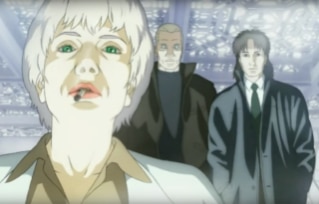It is heartrending to watch the death throes of so many cities. Glorious, opulent and hectic for centuries and in some cases millennia, they survived the vicissitudes of history, wars, pestilence and earthquakes. But now, one after the other, they are withering and becoming steadily less populated, reduced to theatrical backdrops against which a bloodless pantomime is performed. Where life once throbbed, and cantankerous humans elbowed their way through the world, pushing and shoving and trampling on one another, now you will find only ubiquitously similar snack bars and stalls selling quaint specialities and muslins, batiks and cottons, beach wraps and bracelets. What was once a bustling din of loud excitement is now all conveniently listed in travel brochures.
The death warrant for these cities is delivered at the end of a lengthy bureaucratic process held in a building in Paris, in Place Fontenoy, in the seventh arrondissement. The verdict is an indelible label, a branding iron that marks you forever.
The label I refer to is that of the World Heritage Sites, issued by UNESCO. Its touch is lethal: wherever the UNESCO hallmark is applied to a city, the city dies out, becoming the stuff of taxidermy.
This veritable urbanicide (an ugly word, nevertheless better than the horrible “femicide”) is not deliberately perpetrated. On the contrary, it is committed in all good faith and with the loftiest intentions, to preserve examples of heritage for the benefit of humanity. But, as the word says, to preserve means to embalm, or freeze, to rescue from wear and tear and the scars of time; it means to halt time and fix it in a snapshot, to prevent it from changing and evolving.
The urbanistic dilemma offered by UNESCO is an irksome one. There are of course, monuments that need to be defended and protected. But it is also true that, if in 450 BC the Acropolis in Athens had been protected just the way it was then, we would have neither the Propylaeum nor the Parthenon, nor the Erectheum. UNESCO would have turned its nose up in horror at Rome as it was in the 16th and 17th centuries, which produced an admirable pot-pourri of antiquity, mannerism and baroque. Thank heavens the Marais in Paris was not declared a World Heritage site, otherwise we could forget the Beaubourg.
A balance needs to be struck between constructing and preserving. We want to live in cities that include museums and works of art, not in mausoleums with dormitory suburbs attached. It is an inhuman punishment to spend one’s life in the guest-quarters of an endless museum. I recently went back to San Gimignano after a 30-year absence. Within its walls there is not a butcher, not a greengrocer, nor genuine baker to be found. Why so? After the bars, restaurants and souvenir shops have closed, you won’t find the locals sleeping in the city centre any more – they all live outside, in modern condos. Within the city walls, everything has become a set for medieval costume movies, with the inevitable products of “invention of tradition” for commercial uses. The smaller the city the quicker its demise.
Not only in Italy. In Laos, Luang Prabang has suffered the same fate, and its historic centre is now a tourist trap, its houses all converted into hotels and restaurants, with the usual street market – identical the world over – selling the same old necklaces, canvas handbags and leather belts. To find out where the Laotians really live, you have to pedal a couple of kilometres out to Phothisalath Road, beyond Phu Vao Road.
If you walk through Porto, Portugal, you will immediately perceive the invisible frontier of the declared World Heritage area: the variegated and heterogeneous humanity of its urban fabric gives way as if by magic to a monotonous monoculture of innkeepers, bar-tenders and waiters touting for customers recognisable by their hiking boots worn in the city, by their hideously short shorts and hairy legs (why on earth do human beings on a tourist mission feel authorised to dress as they would never dream of doing at home?). Likewise, the World Heritage brand acts as an ideological diploma issued to the hotel industry, as the cultured and humanitarian face of the worldwide tourist machine.
With two aggravating circumstances. The first is what might be called “chronological integralism”, or “temporal fundamentalism”, whereby what dates from an earlier time is worthier of merit. If a site happens to be a thousand years older, the excavation of a Roman wall is justification for tampering with a magnificent medieval cloister (as happened in Lisbon Cathedral). The second aggravating circumstance is of a general philosophical nature: since UNESCO is multiplying its world heritage sites and since humanity continues to produce works of art (or so we hope), if after 2000 years we are already immobilised by innumerable pieces of heritages, what will happen in another 1000 or 2000 years’ time? Will we all be living on the moon and buying tickets to visit the planet Earth?
The 759 cultural heritage sites include 254 cities. The absolute majority of these art-cities are situated in Europe
Let us remember how it has gone so far: in 1972, after several years of discussions, the UNESCO General Conference adopted the World Heritage Convention, which to date (2014) has been adopted by 190 countries. In 1976 the World Heritage Committee was established, and in 1978 it identified its first site. By 2014, after 38 ordinary and 10 extraordinary sessions, it had defined 981 sites in 160 countries. Of these world heritage sites, 759 are cultural, 193 natural, and 29 mixed.
The 759 cultural heritage sites include 254 cities (entire or partial, one district only or the historic centre only). The absolute majority (138) of these art-cities are situated in Europe. In turn, almost half of the European art cities are in just four countries: Italy (29 art cities, including Vatican City and the Republic of San Marino), Spain (17), France and Germany (11 each). Considering its relatively small surface, Italy is the country with the world’s highest density of world heritage sites.
The fact is that the branding just keeps rolling on. One might have thought that what there was to be declared heritage in a country like ours, so packed with history, ought to have already been branded by now. On the contrary: proceeding by decades, in Italy in the ‘70s just one site had been declared a world heritage; in the ‘80s, 5 more were added; and the ‘90s witnessed the biggest explosion, with 25 new heritage sites. But even in the first decade of our millennium a further 14 were identified; joined by 6 more in the first four years of the current decade. That makes a total of no less than 51 natural and art sites.
It is tragic moreover, that cities, towns and regions are queuing up and canvassing to get themselves embalmed. Like the countries aspiring to host the Olympics, unaware of the consequent ruination that will drag them into the abyss (see Greece), so our mayors, councillors and tourist offices strive to obtain the coveted status. We are terrified at the prospect of our country being reduced to one vast museum, where we will have to buy a ticket in order to walk around, while desperately looking for a way out. They’ll make a movie called Escape from the Museum to provide us with a breath of fresh air, a splash
of life, and the spectacle of cities changing before we return to our mothballed environs.
–
© all rights reserved
Marco d’Eramo was born in Rome in 1947. He was a theoretical physics researcher at Rome University for two years, and then studied sociology in Paris with Pierre Bourdieu. For many years he was a special correspondent for the daily newspaper il manifesto in the US. His book The Pig and the Skyscraper. Chicago, a History of our Future, Verso, London/New York 2002, has been translated into various languages and used in numerous urban planning courses.






